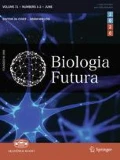Abstract
The biggest challenges of our era include climate change and the global fossil energy problem. Extensive utilization of renewable energy sources should be a part of the solution for both these problems. Biogas is a versatile renewable energy carrier that has the potential to substitute fossil fuels. The most frequently utilized substrates for the anaerobic digestion (AD) process include maize silage today, but there is an increasing demand for second-generation biomass sources, which are cheaper and do not interfere with the cultivation of food production. Green biomass from short rotation coppice willow (GWB) may be a promising alternative. However, to ensure feedstock quantity and quality all year round, a preservation method has to be developed. We attempted to ensilage the biomass and subsequently utilized the resulting willow-silage in batch fermenters. Various mixtures of lactic acid bacteria were employed to facilitate ensiling by inoculation of the substrate in anaerobic jars for 60 days. During the ensiling analytical investigations, (HPLC, pH, oTS/TS%) were carried out in order to follow the build-up of fermentation products. AD fermentations were assembled from the ensilaged biomass and the methane production was measured for 56 days. The total methane yields of the ensilaged biomass were 8–15% higher than that of the fresh biomass and methane production rates were also improved. Our findings suggest that ensiling is not only an excellent preservation method for willow biomass, but also stimulates its AD.





Similar content being viewed by others
References
Alexandropoulou M, Antonopoulou G, Fragkou E et al (2017) Fungal pretreatment of willow sawdust and its combination with alkaline treatment for enhancing biogas production. J Environ Manag. https://doi.org/10.1016/j.jenvman.2016.04.006
Behnood A, Van Tittelboom K, De Belie N (2016) Methods for measuring pH in concrete: a review. Constr Build Mater 105:176–188. https://doi.org/10.1016/j.conbuildmat.2015.12.032
Chandra R, Takeuchi H, Hasegawa T (2012) Methane production from lignocellulosic agricultural crop wastes: a review in context to second generation of biofuel production. Renew Sustain Energy Rev. https://doi.org/10.1016/j.rser.2011.11.035
De Man JC, Rogosa M, Sharpe ME (1960) A medium for the cultivation of Lactobacilli. J Appl Bacteriol. https://doi.org/10.1111/j.1365-2672.1960.tb00188.x
Driehuis F, Elferink SJWHO (2000) The impact of the quality of silage on animal health and food safety: a review. Vet Q. https://doi.org/10.1080/01652176.2000.9695061
Dudits D, Török K, Cseri A et al (2016) Response of organ structure and physiology to autotetraploidization in early development of energy willow Salix viminalis. Plant Physiol. https://doi.org/10.1104/pp.15.01679
Filya I, Ashbell G, Hen Y, Weinberg ZG (2000) The effect of bacterial inoculants on the fermentation and aerobic stability of whole crop wheat silage. Anim Feed Sci Technol. https://doi.org/10.1016/S0377-8401(00)00214-5
Gerardi MH (2003) The microbiology of anaerobic digesters. In: Wastewater microbiology series. Wiley, New Jersey, USA, ISBN: 978-0-471-20693-4
Herrmann C, Heiermann M, Idler C (2011) Effects of ensiling, silage additives and storage period on methane formation of biogas crops. Bioresour Technol. https://doi.org/10.1016/j.biortech.2011.01.012
Holm-Nielsen JB, Al Seadi T, Oleskowicz-Popiel P (2009) The future of anaerobic digestion and biogas utilization. Bioresour Technol. https://doi.org/10.1016/j.biortech.2008.12.046
Kreuger E, Nges I, Björnsson L (2011) Ensiling of crops for biogas production: effects on methane yield and total solids determination. Biotechnol Biofuels. https://doi.org/10.1186/1754-6834-4-44
Mao C, Feng Y, Wang X, Ren G (2015) Review on research achievements of biogas from anaerobic digestion. Renew Sustain Energy Rev. https://doi.org/10.1016/j.rser.2015.02.032
Mohd-Setapar SH, Abd-Talib N, Aziz R (2012) Review on crucial parameters of silage quality. APCBEE Procedia. https://doi.org/10.1016/j.apcbee.2012.06.053
Nielfa A, Cano R, Fdz-Polanco M (2015) Theoretical methane production generated by the co-digestion of organic fraction municipal solid waste and biological sludge. Biotechnol Rep. https://doi.org/10.1016/j.btre.2014.10.005
Ohshima M, Kimura E, Yokota HO (1997) A method of making good quality silage from direct cut alfalfa by spraying previously fermented juice. Anim Feed Sci Technol. https://doi.org/10.1016/S0377-8401(96)01111-X
REN21 (2016) Renewables 2016 Global Status Report
Serapiglia MJ, Humiston MC, Xu H et al (2013) Enzymatic saccharification of shrub willow genotypes with differing biomass composition for biofuel production. Front Plant Sci. https://doi.org/10.3389/fpls.2013.00057
Sindhu R, Binod P, Pandey A (2016) Biological pretreatment of lignocellulosic biomass—an overview. Bioresour Technol. https://doi.org/10.1016/j.biortech.2015.08.030
Teixeira Franco R, Buffière P, Bayard R (2016) Ensiling for biogas production: critical parameters. A review. Biomass Bioenergy. https://doi.org/10.1016/j.biombioe.2016.08.014
Vasco-Correa J, Ge X, Li Y (2016) Biological pretreatment of lignocellulosic biomass. In: Biomass fractionation technologies for a lignocellulosic feedstock based biorefinery. https://doi.org/https://doi.org/10.1016/C2014-0-01890-4
VDI (2006) Fermentation of organic materials, characterisation of the substrate, sampling, collection of material data, fermentation tests. Verlag des Vereins Deutscher Ingenieure, Düsseldorf, 92.
Weiland P (2010) Biogas production: current state and perspectives. Appl Microbiol Biotechnol. https://doi.org/10.1007/s00253-009-2246-7
Zhang JX, Hoshino K (2013) Molecular sensors and nanodevices: principles, designs and applications in biomedical engineering. Academic Press, Cambridge
Zheng Y, Zhao J, Xu F, Li Y (2014) Pretreatment of lignocellulosic biomass for enhanced biogas production. Prog Energy Combust Sci. https://doi.org/10.1016/j.pecs.2014.01.001
Acknowledgements
We acknowledge the research funding received to carry out this study.
Funding
This study has been supported in part by the Hungarian National Research, Development and Innovation Fund projects GINOP-2.2.1-15-2017-00081, GINOP-2.2.1-15-2017-00033, and EFOP-3.6.2-16-2017-00010. ZB received support from the Hungarian NKFIH fund NKFIH FK123902.
Author information
Authors and Affiliations
Contributions
JNy, with the help from BK and KLK, designed and performed the experiments and contributed to the evaluation of the data. KLK conceived the project and participated in its design. JNy, ZB and KLK drafted the manuscript. GR critically evaluated the manuscript. All the authors have read and approved the final manuscript.
Corresponding author
Ethics declarations
Conflict of interest
The authors declare that the research was conducted in the absence of any commercial or financial relationships that could be construed as a potential conflict of interest.
Rights and permissions
About this article
Cite this article
Nyári, J., Kakuk, B., Bagi, Z. et al. Use of ensiled green willow biomass in biogas fermentation. BIOLOGIA FUTURA 72, 263–271 (2021). https://doi.org/10.1007/s42977-021-00067-3
Received:
Accepted:
Published:
Issue Date:
DOI: https://doi.org/10.1007/s42977-021-00067-3




